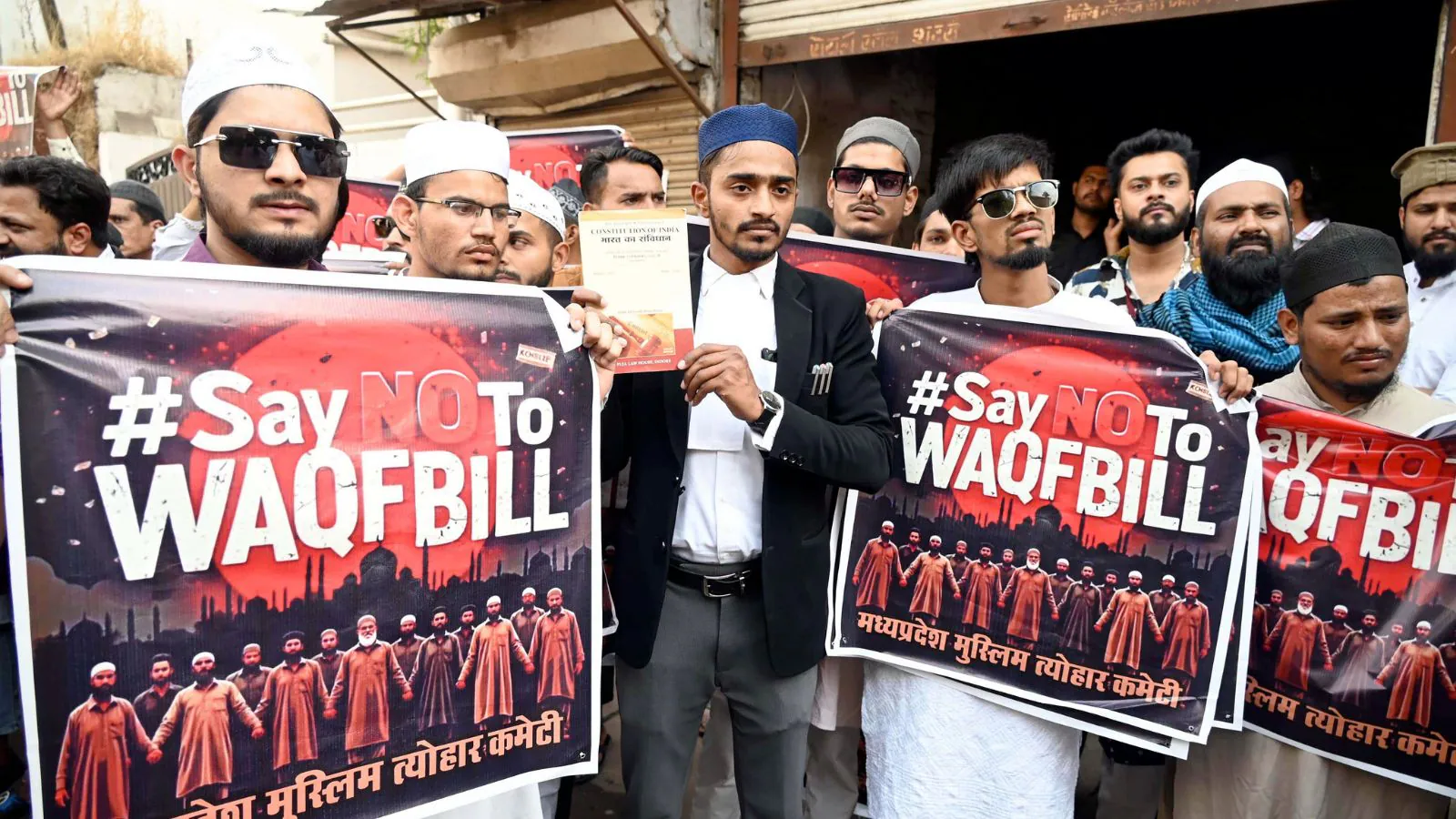Copyright news18

The Supreme Court’s recent judgment on Waqf Amendment Act, 2025, has come as a shot in the arm for the government. The apex court has refused to strike down the enactment, thereby endorsing the constitutionality of the statute and Parliament’s competence to legislate on this concurrent list subject. The two-judge Bench comprising Chief Justice BR Gavai and Justice Augustine G Masih, however, granted interim stay on certain provisions of the Act. This includes Section 3 C (1)-(2) under which collector (revenue officer) had been given power to determine the status of a property as waqf or otherwise. The court found it violated the principle of separation of powers enshrined in the Constitution. Section 3(r), which required a waqif (settler) to be a practising Muslim for five years, has been stayed until the rules are framed under the statute. The court did not find provision arbitrary per se, citing that people could convert to Islam out of ulterior motives like to marry a woman by escaping bigamy laws applicable to other religion, or escape expropriation of property by creditors by declaring it as waqf. The apex court proved this rightly by referring to the Statement of Objects and Reasons of the now impugned Mussalman Wakf Act, 1923. It says inter alia: “Instances of such misuse of trust property are unfortunately so common that a waqf endowment has now come to be regarded by the public as only a clever device to tie up the property in order to defeat creditors and generally evade the law under the cloak of a plausible dedication to the Almighty”. As the colonial-era court records would show, waqf properties were frequently embroiled in legal disputes, a few of which even reached the Privy Council in London. These disputes often pertained to sale/purchase and mortgage, wherein the property in question would suddenly be discovered/declared as waqf as to evade expropriation/ possession by the creditor/buyer. In some cases, the heirs would have borrowed money from lenders, by deliberately suppressing the status of the property as waqf, and would disclose the same when the time came to pay off. A dispute over two bigha (1¼ acre) plot in Machua Bazar, Calcutta (now Kolkata) reached the Privy Council in the 1890s. Ismail Ariff had purchased this plot in 1885 from one Anna Baba Saheb, who had previously purchased the same from the descendants of one Sheikh Khubulla. After the purchase, Ariff was surprised to find that one Mahomed Ghous, a rank outsider, was serving notices on some of the tenants on this plot to collect rents. Ghous identified himself as the sitting mutawalli (caretaker) of the plot, which had allegedly been dedicated as waqf by Sheikh Khubulla. Ariff, failing to obtain relief from the Calcutta High Court, had to escalate his case pertaining to “do bigha zameen” to London from where he finally got justice. In the Ismail Ariff v. Mahomed Ghous (1893) the Privy Council dismissed Ghous’ defence with cost thus rejecting the claim that the plot was a valid waqf. In Ram Charan v Fatima Begum (1915) decided by the Privy Council, the defendant had borrowed (1907) a considerable sum of Rs 16,000 from the plaintiff by mortgaging her share in a property, which she herself subsequently tried to prove as a waqf instituted way back in 1864 by her late father viz. Prince Syeduddin. She, unable to repay the debt, had actually been on the verge of selling it to Ram Charan. Her son viz. Nurul Huq protested that the property being waqf, she had no saleable interest in it. Now, even she seemed to concur, thus becoming the defendant in the legal suit. The legal dispute centred on the character of the property i.e waqf or a gift. The Privy Council upheld it as valid waqf, and thus plaintiff’s case was dismissed. They should have actually debated that had a waqf been instituted four decades ago, mortgaging it in the first place by mutawalli should tantamount to cheating. Since a waqf property cannot be sold, how could it be mortgaged? How will a mortgagee ever recover his/her dues if the debtor defaults on repayment, and perhaps wilfully? In Abdur Rahim v. Narayan Das Aurora (since deceased) & Ors (1922) the Privy Council held that “any claim by the person who advances money must be in the nature of a claim in personam, and cannot be secured by holding liable the waqf property itself”. The Privy Council did not delve into the feasibility of professional creditors advancing money to a stranger without any mortgage. Policymakers often deplore that waqf properties remain “underdeveloped”. Sachar Committee (2006) had famously stated that if these properties were developed, they could fetch an income of Rs 12,000 crore per annum. However, while inaugurating the National Waqf Development Corporation (NAWADCO) on January 29, 2014, the then Prime Minister Dr Manmohan Singh had informed that 4.9 lakh registered waqf properties in India fetch a mere annual income of Rs 163 crore only. This plight is due to the fact that natural laws of economics could not freely operate on waqf. Waqf properties could not act as a collateral security, which explains the poor level of investment on them. In fact, “development” of waqf in itself is a modern concept, as the price of real estate has skyrocketed. The idea of waqf, which could be traced to the advice of the Arabian Prophet, dates back to the 7th century when land was available plentifully. The hordes of Islam, which overran large swathes of territory, had more land than they could handle. Waqf institutions had rendered significant religious/municipal/charitable services in Syria, Egypt, Iraq and the Ottoman Empire during the halcyon days of Islamic rule. Waqfs were instituted to run madrasas, maktabs, hospitals, caravanserais, water facilities etc. However, they failed to reinvent themselves with time because of inherent limitations. The functions of a waqf are bound by the settler’s decree, and it is always managed by a mutawalli, who must be an individual. The development of waqf from the eighth century onward, says Turkish-American economist Timur Kuran (2011), placed the Middle East on a path that produced massive economic difficulties in the age of industrialization. The inflexibility of waqfs became an obvious handicap in the era of industrialisation, whose technologies created a need for reallocating vast resources quickly. The observed inflexibility also contributed to rigidities in other areas by limiting organisational know-how (The Long Divergence: How Islamic Law Held the Middle East Back, P.33). Jurist and educator Asaf Ali Asghar Fyzee (1960) explains why the institution was abolished in various Muslim countries in early 20th centuries as being detrimental to national progress. Waqf, which Fyzee interprets as “Dead Hand”, was found detrimental to national growth. In Turkey, three-fourth of Arable lands were endowed as waqf. At the end of the nineteenth century, half of the cultivable lands in Algiers were dedicated. Similarly, in Tunis one-third, and in Egypt one-eighth of the cultivated soil was ‘in ownership of God’. However, in the beginning of the 20th century, France that ruled Algeria (Tunisia and Morocco were French protectorates) realised that the Dead Hand spelled ruin. Later, Turkey and Egypt also realized the same. Thus, in 1830, the French government took over habousin Algiers, and later on in Morocco. Elsewhere government control was made more stringent. In 1924, the Turkish republic abolished the Ministry of Wakfs, and it was taken over by a general directorate, or secular administration. In Egypt, Mohammed Ali first confiscated all agricultural waqf and compensated the beneficiaries. In 1924, the Waqf Ministry came under Parliament. In Russia, where waqfs existed in Muslim districts for centuries, they were confiscated as state land soon after the Russian Revolution (Outlines of Muhammedan Law, P.266-267). In India—even in the heydays of Delhi Sultanate, Mughal Empire or Bahmani kingdom—waqf did not play any such important role as in the Middle East and the Ottoman Empire. Mismanagement of iconic waqf property viz. Hooghly Imambarah (West Bengal) and embezzlement of its fund became a high-profile legal issue in 1815. The Bengal government in 1914 published a collection of all documents, running into 900 pages, pertaining to this century-old dispute (Collection of Papers relating to Hooghly Imambarah 1815-1910). The Mussalman Wakf Registration Bill, 1923, was brought in by the colonial government at the behest of the Muslim members of the Central Legislative Assembly, part of the bicameral legislature under the Government of India Act, 1919. Under this law, the mutawallis had to submit to court the waqf deed, a schedule of waqf property, and an account of income etc. Maulavi Abul Kasem on March 22, 1923, admitted that the game of mortgage on waqf properties had been going on for a long time. He, however, could offer no solution except cautioning the creditors to keep their ears and eyes open. The Bill proposed that every mutawalli would have to register in a public office the full details of the waqf property. Khan Bahadur Maulavi Amjad Ali deplored that the Select Committee of the House had removed a provision from the Bill under which anybody could file a suit against the mutawalli for wrongdoing. Amjad Ali alleged that mutawallis mismanaged waqf properties in any manner they thought fit. He felt the Bill was not strong enough to curb the misbehaviour of mutawallis. He wanted a provision wherein an errant mutawalli could be brought to justice. A century later, mismanagement of waqfs by mutawallis still remains a common complaint. The writer is author of the book ‘The Microphone Men: How Orators Created a Modern India’ (2019) and an independent researcher based in New Delhi. Views expressed in the above piece are personal and solely those of the author. They do not necessarily reflect News18’s views.



